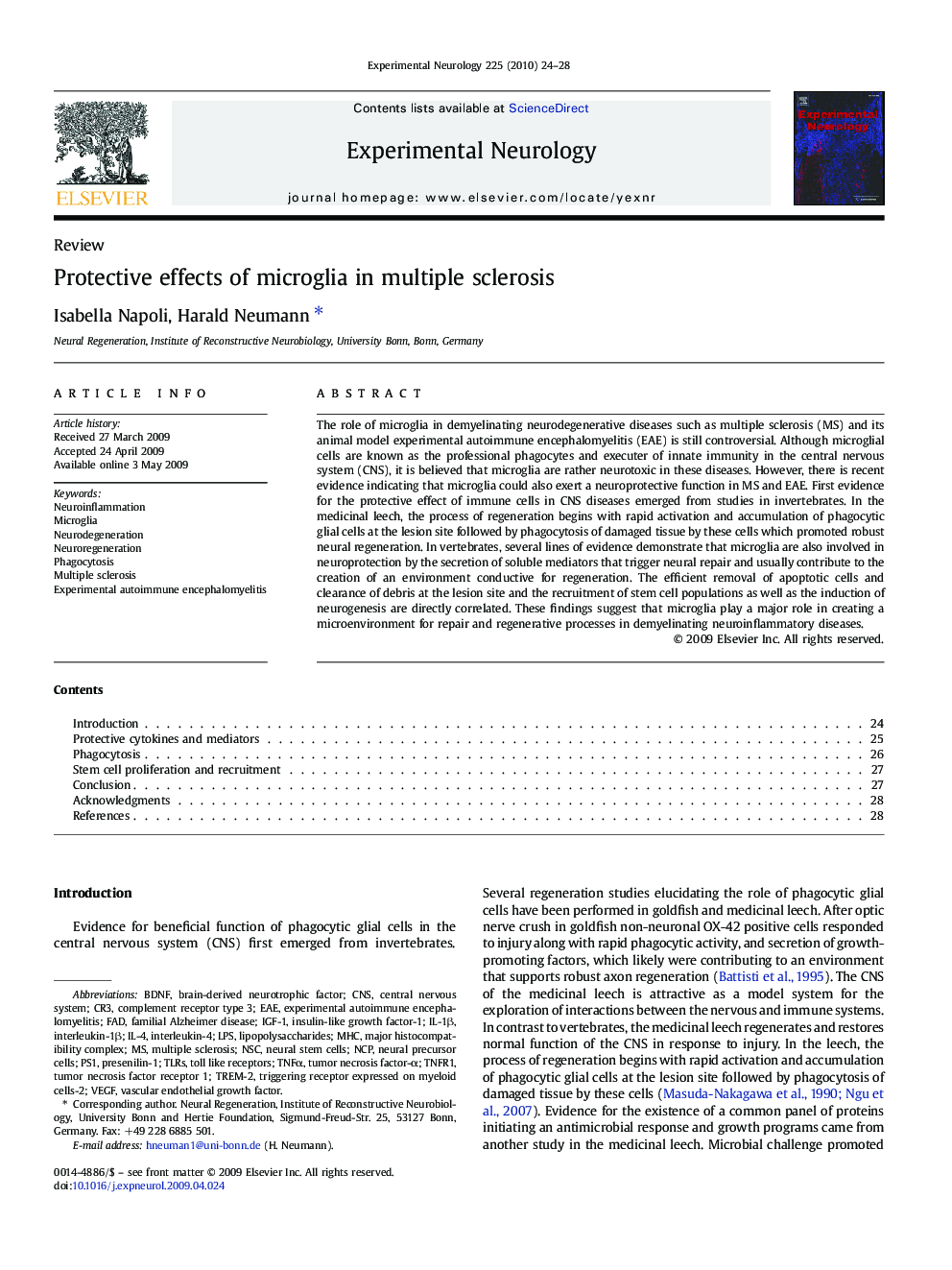| کد مقاله | کد نشریه | سال انتشار | مقاله انگلیسی | نسخه تمام متن |
|---|---|---|---|---|
| 3056048 | 1186552 | 2010 | 5 صفحه PDF | دانلود رایگان |

The role of microglia in demyelinating neurodegenerative diseases such as multiple sclerosis (MS) and its animal model experimental autoimmune encephalomyelitis (EAE) is still controversial. Although microglial cells are known as the professional phagocytes and executer of innate immunity in the central nervous system (CNS), it is believed that microglia are rather neurotoxic in these diseases. However, there is recent evidence indicating that microglia could also exert a neuroprotective function in MS and EAE. First evidence for the protective effect of immune cells in CNS diseases emerged from studies in invertebrates. In the medicinal leech, the process of regeneration begins with rapid activation and accumulation of phagocytic glial cells at the lesion site followed by phagocytosis of damaged tissue by these cells which promoted robust neural regeneration. In vertebrates, several lines of evidence demonstrate that microglia are also involved in neuroprotection by the secretion of soluble mediators that trigger neural repair and usually contribute to the creation of an environment conductive for regeneration. The efficient removal of apoptotic cells and clearance of debris at the lesion site and the recruitment of stem cell populations as well as the induction of neurogenesis are directly correlated. These findings suggest that microglia play a major role in creating a microenvironment for repair and regenerative processes in demyelinating neuroinflammatory diseases.
Journal: Experimental Neurology - Volume 225, Issue 1, September 2010, Pages 24–28